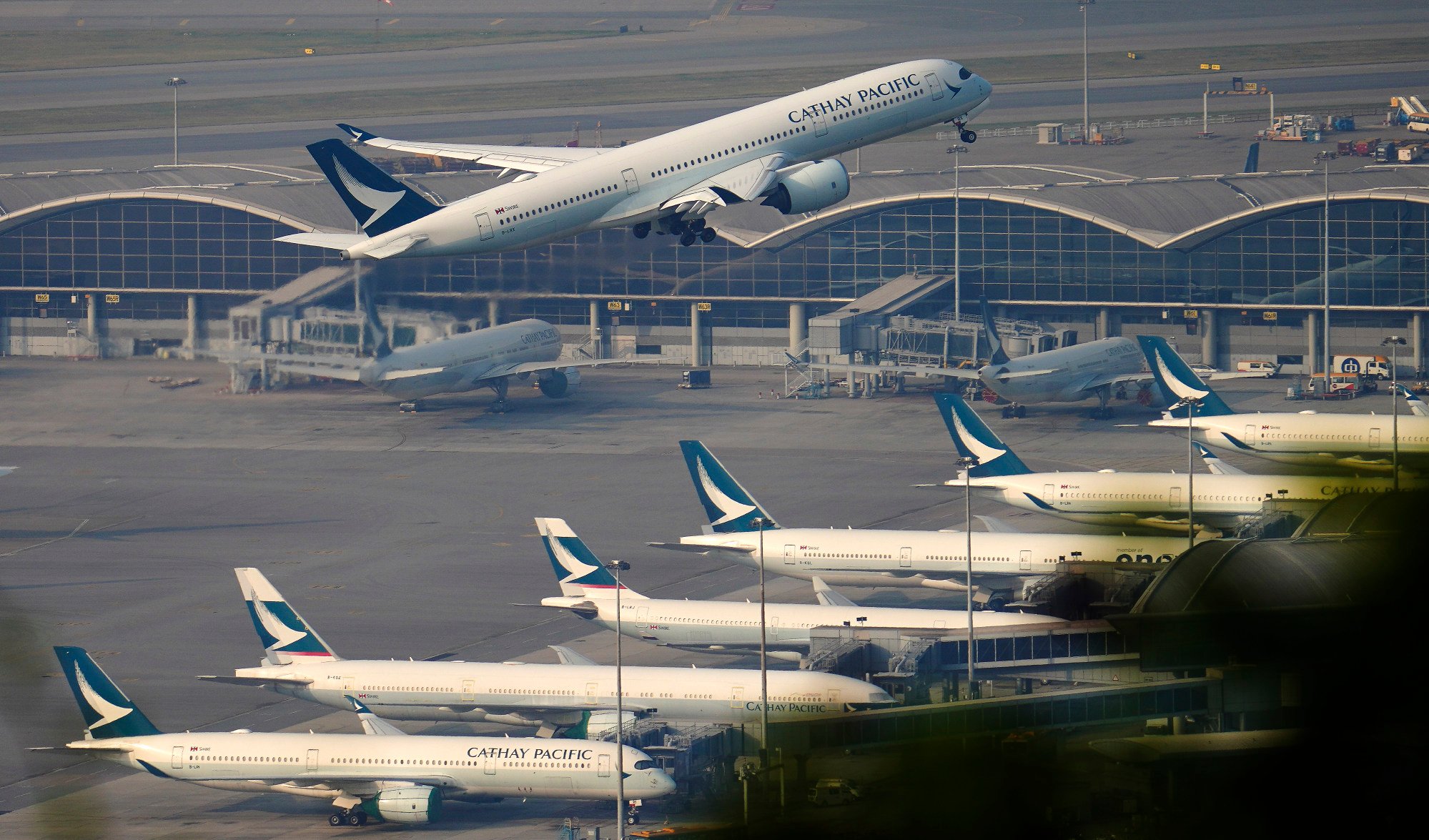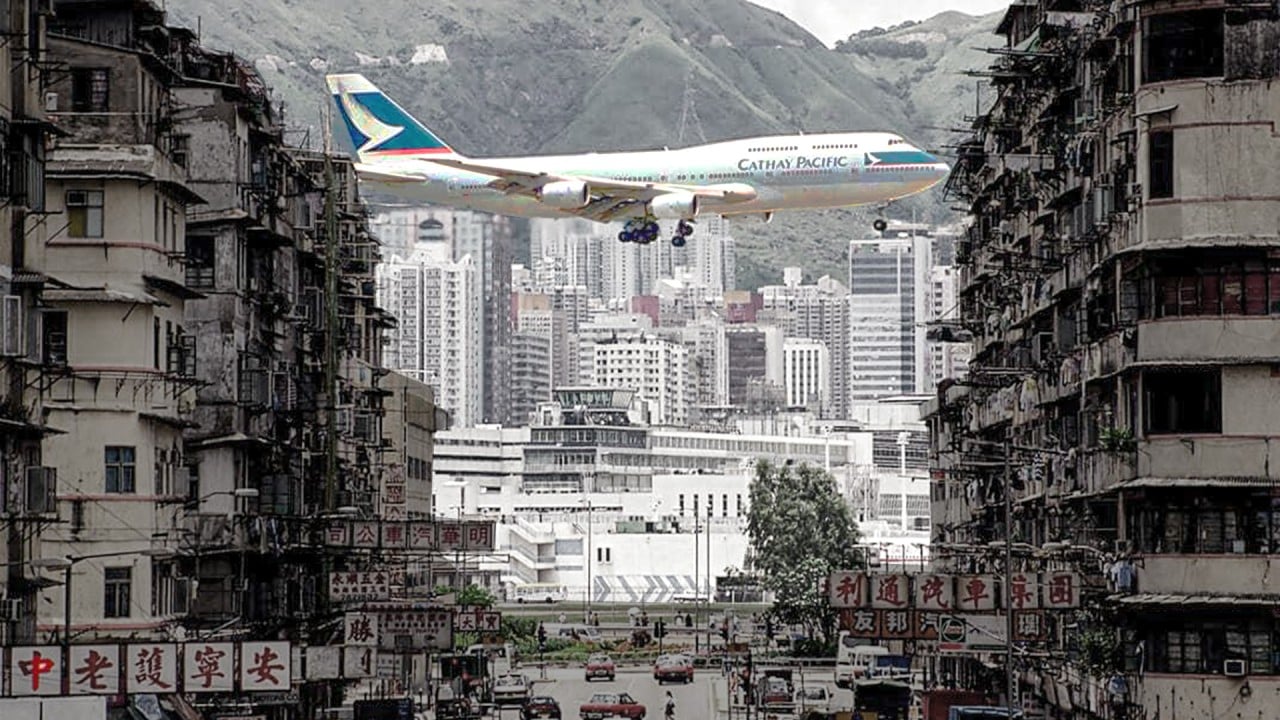
Recovery of Hong Kong aviation sector ‘stronger than expected’, IATA chief says, pointing to Greater Bay Area initiatives
- IATA chief Willie Walsh says aviation sector is making ‘considerable progress’, hails initiatives to boost traffic into city and Greater Bay Area
- Measures to strengthen cooperation between Hong Kong, Greater Bay Area include connecting passengers in Macau to airport by bus via the mega bridge
The Hong Kong aviation sector’s recovery is proving “stronger than expected” and is being driven by initiatives to boost traffic into the city and Greater Bay Area, the head of an international airline trade body has said, with the industry globally expected to post a US$23.3 billion profit this year.
Willie Walsh, director general of the International Air Transport Association (IATA), on Wednesday said Hong Kong was making “considerable progress” as the sector recovered to pre-pandemic levels.
“Hong Kong is proving stronger than expected. I think it’s the whole emphasis on – not just on Hong Kong – but on the Greater Bay Area, [and] the initiatives they have there to attract traffic into the region and into Hong Kong,” he said at IATA’s headquarters in Geneva.

The “Greater Bay Area” refers to the Chinese government’s scheme to link the cities of Hong Kong, Macau, Guangzhou, Shenzhen, Zhuhai, Foshan, Zhongshan, Dongguan, Huizhou, Jiangmen and Zhaoqing into an integrated economic and business hub.
The city has implemented measures to strengthen cooperation for both cargo and passengers between Hong Kong and the Greater Bay Area.
They include one launched in August connecting passengers in Macau to the airport’s restricted area directly by bus via the Hong Kong–Zhuhai–Macau Bridge.
In July, IATA revised its own projection for Hong Kong’s aviation recovery and forecast the city would reach pre-pandemic passenger levels by the end of 2024, three years earlier than previously predicted.
Boost for Hong Kong aviation as 2,900 imported worker requests approved
Walsh’s assessment came as Chief Executive John Lee Ka-chiu revealed on Tuesday that China’s home-grown Comac C919 aircraft would fly outside the mainland for the first time next week and head to Hong Kong. It will be joined by an ARJ21 jet.
Lee called the C919 visit to Hong Kong a reflection of the country’s focus on developing the city’s aerospace industry and its status as an international aviation hub.
The city is also ramping up aviation-related conferences in the coming months, including the Asia-Pacific Region Innovation and Capability Building Symposium next Thursday and Friday, hosted by the aviation administrations of both Hong Kong and the mainland.
Aero-Engines Asia-Pacific, organised by an industry service provider, will be held next April.

The head of the 320-strong IATA, whose members account for most of global air traffic, said the earlier-than-expected reopening of mainland China in January had helped to drive traffic in 2023.
However, supply chain issues, new aircraft delivery delays, access to spare parts and maintenance continued to frustrate airlines, Walsh added.
IATA has upgraded its forecast for the global airline industry and expects it to make a net profit of US$23.3 billion this year, more than double the US$9.8 billion figure in June and the first since 2019.
Overall revenue for 2023 is expected to reach US$896 billion.
The trade lobby said the improvement was “entirely driven” by the passenger business, with revenues increasing amid strong travel demand.
Boost for Hong Kong aviation as 2,900 imported worker requests approved
It expected the industry’s net profit to reach US$25.7 billion in 2024, with revenue predicted to grow 7.6 per cent year on year to US$964 billion.
Carriers such as Singapore Airlines and Emirates have reported record profits this year off the back of strong travel demand and elevated ticket prices.
Hong Kong flag carrier Cathay Pacific Airways earlier said it expected to report its first annual profit in four years, and forecast flight numbers would reach 70 per cent of pre-pandemic levels by the end of 2023.
Walsh pointed to the net profit margin of 2.7 per cent next year – or US$5.45 for every passenger carried on average – arguing it was wrong to say airlines were making “super profits”.
He said IATA’s analysis of air fares showed they had either risen in line with inflation or lagged slightly behind it.
However, Asia-Pacific is the only region to lag behind others, with both demand and capacity remaining below pre-pandemic levels.
The airline body expects the Asia-Pacific region to recover to pre-pandemic levels in 2024. Globally, passenger traffic had reached 98.2 per cent of pre-Covid levels, it said.
Next year, 4.7 billion people are expected to travel, passing the 4.5 billion recorded in 2019.
Hong Kong’s Cathay Pacific expects first annual profit in 4 years
In Hong Kong, passenger levels have taken longer to return to pre-pandemic numbers.
Hong Kong International Airport handled 3.8 million passengers in October, or 70 per cent of the level recorded in the same month in 2019.
The mainland is a crucial component for the recovery of the global aviation industry. The mainland’s international travel remained at 40 per cent below pre-pandemic levels, according to IATA.
In 2019, mainland travellers made more than 150 million international trips, spending about US$1 trillion.
Additional reporting by Wynna Wong


